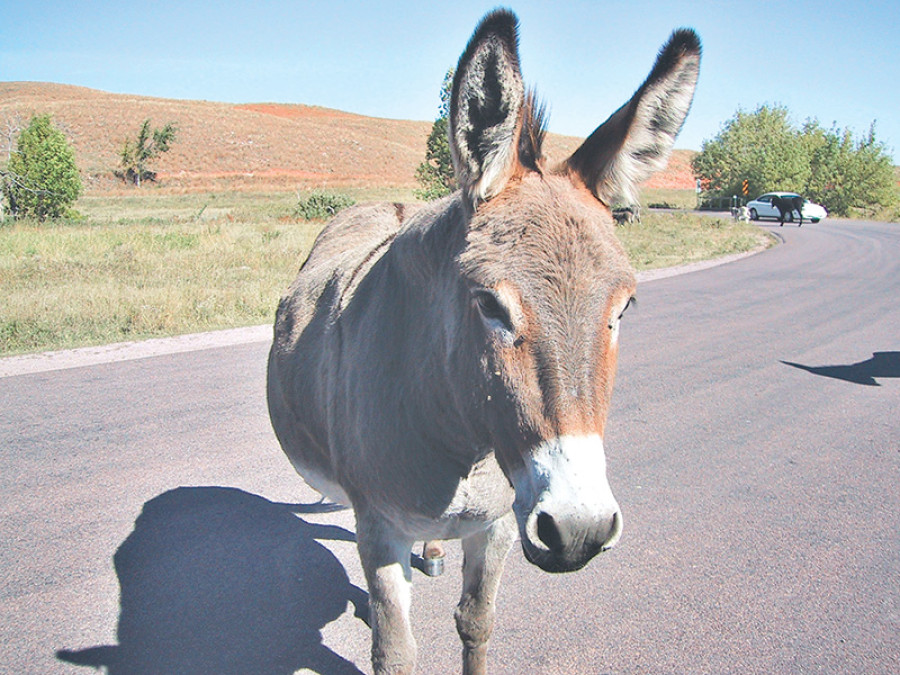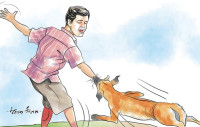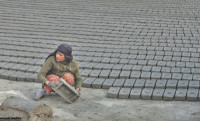Opinion
Donkey business
Donkey skins have become a hot commodity on the black market
Maneka Gandhi
Every few years the Chinese fixate upon an animal and come to the conclusion that its parts will cure everything from acne to cancer. It doesn’t matter where the animal is; it could be the Totoaba, a fish found only in one lake in Mexico, which is almost totally decimated because the Chinese wanted its swim bladder. It could be the hair from the nose of a rhino, the pancreas of the Indian bear.
The Chinese have finished entire species in dozens of countries including India. India’s tiger and shark poaching is due to their greed for their parts. Africa’s elephants are almost gone and Australia loses millions of native birds to Chinese fetishes for keeping caged birds. Dried abalone, a status food that can sell for more than $90 per pound in China, forms the nucleus of a criminal economy worth millions each year in South Africa, with documented links to money laundering and the drug trade. There are virtually no animals left in their own country and their greedy, uncaring fingers pull out animals from the most environmentally conscious nations.
Now it is the turn of the donkey. Donkey hide gelatine, obtained by soaking and stewing the skin of a donkey, is used as a new ingredient in ‘old’ Chinese medicine. It is called ejiao. It is hard and brittle, brown and shiny, translucent and slightly sweet—as dried glue is.
It is supposed to enrich the blood strengthen bones, and cure dizziness, anaemia, palpitations, insomnia, cancer, and prevent miscarriages and so on. The Chinese also eat donkey glue as a snack bar mixed with nuts and seeds. It’s called Gu Yuan Gao. Ejiao is made into liqueurs. Put into creams it is used for leg ulcers or anti aging, rosy cheeks and glossy skin.
The Pharmacopoeia of the People’s Republic of China (the 1990, 1995 and 2000 editions), refer to donkey-hide gelatine as the only certified ejiao product. And businessmen picked this up. In the 1990s ejiao was rebranded as a consumer item and beauty product, causing sales—and demand for donkey skins—to skyrocket.
Millions of donkeys were immediately killed in China. Their population took a steep dive. Donkey hides became rare and expensive—up to £300 per kilo. There were also restrictions on importing animal hides from outside the country. So, first the manufacturers got the Chinese government to lift the restrictions. And then they went hunting across the world, starting with Mongolia, Afghanistan, Africa and South America.
In ten years, donkey prices began to rise steeply around the world. African countries found they had no donkeys left. Uganda, Tanzania, Botswana, Niger, Burkina Faso, Mali, and Senegal have banned donkey exports to China. Yet this has not stopped donkeys being killed. Donkey skins have become a hot commodity on the black market, and wildlife traffickers have moved in. Agents of the Chinese go from village to village, steal animals at night and strip their skins off on the spot.
With the decimation of the donkey, many rural communities in Africa and South America have lost their livelihoods for a product no one needs. The price of donkeys has risen steeply in some countries, making them unaffordable for people who use them to take goods to market, cultivate land, and fetch water. The cost of a donkey in Burkina Faso, for example, has increased from £60 in 2014 to £108 in 2016. In Niger, the price has climbed from $34 to $145. In Kenya, the prices are even higher.
Entire criminal mafias have emerged in many countries. Illegal, or “bush” slaughter, which frequently involves stolen donkeys, has been reported in Egypt, South Africa and Tanzania, Brazil, Mexico and Peru. The stolen donkeys are mostly working animals, which means their owners then have no transport and can’t get to market, fetch water or get children to school. Africa has been badly hit because the animals are such an important part of life for transport and farming—particularly in poorer communities. Their steep cost makes it impossible for the owners to replace a stolen donkey. In Egypt, one of China’s main suppliers, the cost of buying a donkey has increased from £17 to £170.When Niger banned donkey skin export the Chinese moved to Nigeria where the prices have gone up from 15,000 Naira per donkey to 75,000 Naira.
Unfortunately, Kenya has started three large donkey slaughterhouses. While their own population is almost done donkeys are being smuggled in from countries that have banned their slaughter, or export of donkey hides—South Africa, Uganda, The Chinese pay $48 per skin, making it very lucrative to break all the laws. South Africa allows the export of a maximum of 7,300 donkey skins a year. Yet, when the police investigated just one firm, they found they had exported 15,000 in less than a year. Firms in Nigeria, Chad and Cameroon are openly advertising donkey skins—as well as pangolins whose international trade is forbidden. The Chinese buy both from the same firms.
Even though the Chinese know that most of these skins are from the black market, on January 1, 2017 the Chinese government brought down import duties on donkey hide from 5 percent to 2 percent..
Ten years ago there were approximately 44 million donkeys spread over Asia, Africa and South America. Ten years from now , they will be down to less than a million.
Why have the Chinese been allowed to carry out this genocide?
To join the animal welfare movement contact [email protected], www.peopleforanimalsindia.org




 10.12°C Kathmandu
10.12°C Kathmandu










